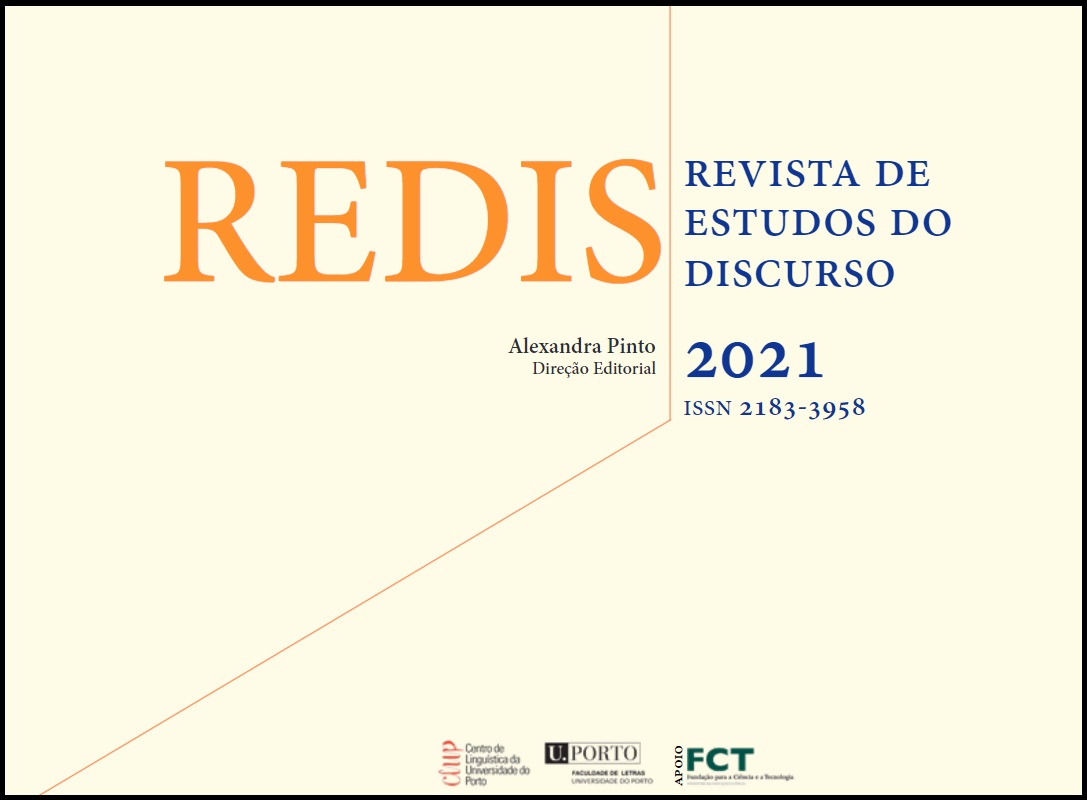The woman by herself in three Brazilian clips: a semiodiscursive analysis
DOI:
https://doi.org/10.21747/21833958/red10a5Keywords:
Representation, Women, Imaginary, Ethos, PathosAbstract
This paper intends to problematize the representation of women in three clips related to the songs Mulher do fim do mundo (Woman from the end of the world, 2015); Triste, louca ou má (Sad, crazy or bad, 2016) and Dona de mim (Owner of me, 2018), in the voices of Elza Soares, Juliana Strassacapa and Iza, respectively. It is intended to demonstrate how the enunciative process itself contributes not only to the implication of meanings, but also to the promotion of effects with echoes in the social (re)construction of female identity. Thus, with the main support of the Semiolinguistic Theory of Discourse Analysis, the implication of the sociodiscursive imaginary, as well as the representation of the woman’s ethos (image that, in this case, the announcer makes of herself) and the manifestation of the pathos (as a target effect oriented towards the mobilization of the other through emotion) will be investigated in the communication contracts signed by the clips. In the analyses, it is attested the utterance of the enunciators that resist the hegemonic identity of women allied to narrative images that materialize their reaction to the subordinate position that the feminine gender usually occupies in society, and, thus, embody the resignification of women condition.
References
Amossy, R. (2005). Imagens de si no discurso: a construção do ethos. São Paulo: Contexto.
Aristóteles. (2015). Retórica. São Paulo: Folha de São Paulo.
Beauvoir, S. de. (2009). O segundo sexo. (2a ed.). São Paulo: Nova Fronteira.
Bourdieu, P. (2017). A dominação masculina: a condição feminina e a violência simbólica. (5a ed.). Rio de Janeiro: Bestbolso.
Charaudeau, P. (2015). Identidade linguística, identidade cultural: uma relação paradoxal. Discurso e (des)igualdade social. São Paulo: Contexto, p. 13-30.
Charaudeau, P. (2010). A patemização na televisão como estratégia de autenticidade. As emoções no discurso, volume II. Campinas: Mercado de Letras.
Charaudeau, P. (2008). Linguagem e discurso - modos de organização. São Paulo: Contexto.
Charaudeau, P. (2006). Discurso político. São Paulo: Contexto.
Charaudeau, P. & Maingueneau, D. (2004). Dicionário de Análise do discurso. São Paulo: Contexto.
Courtine, J. (2013). Decifrar o corpo: pensar com Foucault. Petrópolis: Vozes.
Galinari, M. M. (2014). Logos, Ethos e Pathos: “Três lados” da mesma moeda. Alfa, 58 (2), pp. 257285.
Hooks, B. (2019). Teoria feminista: da margem ao centro. São Paulo: Perspectiva.
Kerbrat-Orecchioni, C. (1996). La conversation. Paris: Seuil.
Lugones, M. (2020). Colonialidade e gênero. Pensamento feminista hoje: perspectivas decoloniais. Rio de Janeiro: Bazar do Tempo, p. 52-83.
Maingueneau, D. (2008). A propósito do Ethos. Ethos discursivo. São Paulo: Contexto, pp. 11-19.
Maingueneau, D. (2005). Ethos, cenografia, incorporação. Imagens de si no discurso: a construção do ethos. São Paulo: Contexto, pp. 69-92.
Mira, R. (2017). O arquétipo da princesa na construção social da feminilidade. Lisboa: Edições Colibri.
Plantin, C. (2010). As razões das emoções. As emoções no discurso, volume II. Campinas: Mercado de Letras, pp. 57-80.
Santos, B. de S. (2020). O fim do império cognitivo: a afirmação das epistemologias do Sul. Belo Horizonte: Autêntica.
Wolf, N. (2020). O mito da beleza: como as imagens de beleza são usadas contra as mulheres. (13a ed.). Rio de Janeiro: Rosa dos Tempos.
Downloads
Published
How to Cite
Issue
Section
License
Copyright (c) 2021 Redis: Revista de Estudos do discurso

This work is licensed under a Creative Commons Attribution 4.0 International License.
The authors give to REDIS. Revista de Estudos do Discurso the exclusive right to publish its texts, in any medium, including their reproduction and sale in paper or digital format, as well as their availability in a free access regime in databases.
















